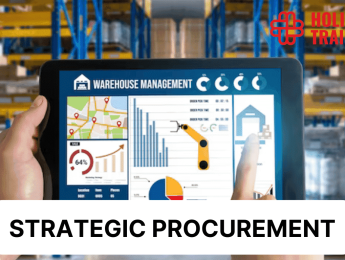- Table of Contents
- Introduction
- The Benefits of Employee Training
- A. Enhanced Productivity
- B. Skill Development
- C. Adaptability
- D. Boosted Confidence
- E. Fostering Innovation
- F Enhanced Customer Service
- G. Improved Job Satisfaction
- H. Safety and Compliance
- Internal vs. External Training: Processes and Differences
- Expertise and Specialisation
- Objectivity and Perspective
- Customisation and Focus
- Networking Opportunities
- Access to the Latest Trends
- Time and Resource Management
- 8 Reasons to Invest in External Training
- 1. Cutting-Edge Knowledge and Techniques
- 2. Diverse Training Programmes
- 3. Industry Best Practices
- 4. Fresh Perspective and Objectivity
- 5. Tailored Training Solutions
- 6. Networking and Collaboration
- 7. Minimising Time and Resource Constraints
- 8. Employee Motivation and Retention
- The Future of Employee Training
- A. Virtual Reality Training
- B. Artificial Intelligence in Learning
- C. Online Platforms and Remote Learning
- D. Mental Health and Employee Well-being
- Conclusion
Introduction
Employee training is the cornerstone of a thriving organisation. As businesses continue to evolve in an ever-changing landscape, investing in the development of your workforce is no longer a luxury but a strategic imperative. The benefits of employee training extend far beyond individual skill enhancement, positively impacting overall company performance. Companies often choose between internal and external approaches when it comes to training. In this blog post, we will explore the significance of employee training, delve into the differences between internal and external training processes, and present eight compelling reasons why opting for external training can revolutionise your organisation's growth and prosperity.
The Benefits of Employee Training
Employee training is an essential element in nurturing a competent and motivated workforce. When meticulously designed, employee training programmes positively impact the engagement of 92% of employees, according to Zippia. By providing your employees with the necessary tools and knowledge, you empower them to excel in their roles, and this, in turn, positively impacts your business in numerous ways:
A. Enhanced Productivity
When employees are adequately trained, they possess a clear understanding of their roles and responsibilities. This clarity translates into streamlined processes, efficient task execution, and a significant boost in productivity. Imagine a workforce where each member possesses the skills and knowledge necessary to perform their duties optimally. Tasks are completed with precision and speed, leading to a more agile, competitive, and ultimately successful organisation.
B. Skill Development
In today's rapidly evolving business landscape, stagnating equates to falling behind. Employee training acts as a conduit for continuous skill development. From technical proficiencies essential for specific roles to soft skills like communication, teamwork, and leadership, training programmes offer diverse learning opportunities. By keeping employees abreast of industry trends, emerging technologies, and best practices, organisations ensure their workforce remains adaptable and proficient, ready to face any challenge.
C. Adaptability
External training, in particular, plays a pivotal role in fostering a culture of adaptability within the organisation. Exposure to diverse training programmes, often facilitated by experts from various fields, exposes employees to new perspectives, methodologies, and technologies. This exposure encourages a mindset open to change and innovation. Adaptability becomes a precious asset in a world where market conditions and business landscapes constantly shift. Employees who are trained to embrace new technologies and approaches are better equipped to address unforeseen challenges and pivot swiftly, rendering the organisation resilient in the face of uncertainty.
D. Boosted Confidence
Training not only imparts new skills but also nurtures confidence in employees. As they acquire knowledge and practise new skills, their self-assurance grows. This newfound confidence is transformative, influencing how employees approach their tasks. Confident employees are more likely to take on challenges, propose innovative ideas, and exhibit leadership qualities within their roles. This proactive attitude benefits individual employees and contributes to a positive, can-do atmosphere within the organisation.
E. Fostering Innovation
Innovation often thrives in environments where employees are encouraged to think outside the box. Well-designed training programmes expose employees to industry best practices, diverse perspectives, and creative problem-solving techniques. Additionally, external training facilitates interactions with professionals from other companies through networking opportunities. These interactions can spark innovative ideas and collaborations that might not have occurred within the confines of the organisation. The result is a workplace that buzzes with creativity, where employees are inspired to experiment, invent, and contribute novel solutions to problems, propelling the organisation forward with fresh perspectives and cutting-edge initiatives.
F Enhanced Customer Service
For businesses, exceptional customer service is non-negotiable. Training plays a pivotal role in improving the customer experience. Properly trained employees develop strong interpersonal skills, effective communication techniques, and adept problem-solving abilities. These skills are instrumental in fostering efficient, empathetic interactions with customers. When customers feel heard, understood, and well-assisted, it increases satisfaction, loyalty, and positive word-of-mouth referrals. In essence, investing in employee training indirectly invests in customer satisfaction, bolstering the organisation's reputation and ensuring long-term success.
G. Improved Job Satisfaction
Employee training is a tangible demonstration of an organisation's commitment to its workforce. When employees feel supported and empowered through training initiatives, their job satisfaction soars. Studies indicate that many employees prioritise career advancement opportunities as a crucial factor influencing their job satisfaction within an organisation. In fact, a significant 41% of employees prioritise career advancement opportunities as a crucial factor influencing their job satisfaction within the organisation. Training equips them with the tools needed to succeed, minimising frustration due to a lack of skills or knowledge gaps. A content and engaged workforce is more likely to stay committed to their roles and the company, leading to reduced turnover rates and increased retention of top talent.
H. Safety and Compliance
In certain industries, particularly those involving potential safety risks, proper training is not just beneficial; it's imperative. Training programmes focused on safety protocols and compliance ensure that employees are well-versed in the necessary procedures to maintain a secure workplace. Beyond ensuring safety, such training also addresses regulatory requirements. Employees who are knowledgeable about safety measures and compliance protocols reduce the risk of accidents and injuries. This not only preserves the physical well-being of the workforce but also safeguards the organisation from costly fines and legal implications, thereby ensuring a secure, legally compliant, and productive work environment.
In summary, employee training goes far beyond the acquisition of skills—it fosters a positive, adaptive, and innovative organisational culture. By investing in the continuous development of their workforce, organisations create a powerful engine for growth, ensuring they are not only competitive in the present but also well-prepared for the challenges and opportunities of the future.
Internal vs. External Training: Processes and Differences
Internal training involves the organisation conducting training sessions using its own resources, such as in-house trainers or experienced employees. On the other hand, external training refers to hiring professional trainers or enrolling employees in training programmes offered by external training providers. While both approaches have their merits, let's explore the differences between internal and external training processes:
Expertise and Specialisation
-Internal Training:
Internal training often relies on in-house trainers or experienced employees to impart knowledge. While these trainers have an intimate understanding of the company’s specific processes, they might lack the depth of expertise in broader industry trends and specialised techniques.
-External Training:
External training providers are industry experts. They bring a wealth of up-to-date knowledge, specialised training techniques, and a broader perspective garnered from working with diverse clients across various sectors. This specialised expertise ensures a higher level of competency among the trained employees.
Objectivity and Perspective
-Internal Training:
Internal trainers, being part of the organisation, have a subjective perspective. Due to their familiarity with the company culture and processes, they might inadvertently overlook certain areas that require improvement.
-External Training:
External trainers offer an objective viewpoint. Their fresh eyes can identify strengths and weaknesses within the organisation without biases, leading to a more accurate assessment of training needs. This external perspective is invaluable for strategic planning and organisational growth.
Customisation and Focus
-Internal Training:
Internal training programmes may lack customisation, as they are often generalised to fit a broad spectrum of employees. Tailoring the training to specific roles or skill gaps might be challenging due to limited resources or expertise.
-External Training:
External training providers excel in customisation. They work closely with organisations to understand their unique needs, allowing them to design training programmes that address specific challenges. Tailored training ensures employees receive focused, relevant content that enhances their skills and job performance.
Networking Opportunities
-Internal Training:
Internal training is limited to employees within the organisation. While it promotes team bonding, it lacks exposure to external networks and industry peers.
-External Training:
External training programmes often bring together professionals from various organisations and industries. These interactions create invaluable networking opportunities. Employees can exchange insights, learn from others' experiences, and potentially foster collaborations, leading to cross-industry innovations.
Access to the Latest Trends
-Internal Training:
Internal trainers might struggle to keep up with the rapidly evolving industry trends and emerging technologies due to their primary focus on internal processes.
-External Training:
External trainers are dedicated to staying abreast of industry advancements. They ensure that the training content aligns with the latest trends and technologies, providing employees with cutting-edge knowledge essential for staying competitive in the market.
Time and Resource Management
-Internal Training:
Internal training programmes demand significant time and resources from HR departments and management teams. Crafting effective training modules, organising sessions, and ensuring employee participation require meticulous planning and execution.
-External Training:
Outsourcing training to external providers alleviates the burden on internal resources. HR and management teams can redirect their focus and efforts toward other essential aspects of the organisation, maximising their productivity and efficiency.
In essence, the choice between internal and external training hinges on the organisation’s specific needs, budget, and long-term goals. While internal training fosters a sense of internal camaraderie and familiarity, external training brings specialised expertise, objectivity, customisation, and invaluable networking opportunities. Ultimately, the decision must align with the organisation's vision, ensuring that the chosen method empowers employees, enhances skills, and contributes significantly to the organisation's overall growth and success.
8 Reasons to Invest in External Training
Investing in external training can be a transformative decision for any organisation. External training programmes, facilitated by experts in their respective fields, offer many advantages that can revolutionise your workforce and propel your organisation to new heights of success. Here are eight compelling reasons why investing in external training is a strategic imperative:
1. Cutting-Edge Knowledge and Techniques
External training providers are specialists in their domains. They possess the latest industry knowledge and techniques, ensuring your employees receive training on cutting-edge practices. This exposure equips your workforce with the tools necessary to remain competitive in rapidly evolving markets. By staying ahead of the curve, your organisation can innovate, adapt to change, and lead in your industry.
2. Diverse Training Programmes
External training providers offer a diverse range of training programmes, catering to various subjects and industries. External providers have tailored programmes to meet these needs, whether your employees need leadership development, technical skills training, or soft skills enhancement. This diversity ensures that every employee, regardless of their role, can benefit from specialised training designed to enhance their specific skills and expertise.
3. Industry Best Practices
Training from external experts exposes your employees to industry best practices. These best practices are accumulated from years of experience and successes in the field. Implementing these practices within your organisation increases efficiency, reduces costs, and improves overall performance. By aligning your processes with proven industry standards, your organisation can optimise its operations and deliver exceptional results.
4. Fresh Perspective and Objectivity
External trainers bring a fresh perspective and an objective view of your organisation's strengths and weaknesses. Their external assessment helps identify areas for improvement that might be overlooked internally. This unbiased evaluation is invaluable for strategic decision-making, allowing your organisation to address weaknesses proactively and capitalise on its strengths, thus fostering continuous improvement.
5. Tailored Training Solutions
Customisation is key when it comes to effective employee training. External training providers work closely with organisations to design and deliver tailored training solutions that align with specific goals and challenges. By understanding your organisation's unique needs, these providers create training programmes that address the exact skills gaps within your workforce. Tailored training ensures that the learning experience is focused, relevant, and directly applicable to your employees' challenges in their roles.
6. Networking and Collaboration
Enrolling employees in external training programmes introduces them to professionals from other companies and industries. These networking opportunities can foster collaborations, encourage the exchange of ideas, and drive innovation within your organisation. Interacting with peers from diverse backgrounds broadens your employees' perspectives and opens doors to potential partnerships and business opportunities, enriching your organisation's ecosystem.
7. Minimising Time and Resource Constraints
Running internal training programmes can be time-consuming and resource-intensive. By outsourcing training to external providers, you free up internal resources. Human resources and management teams can focus on other essential aspects of the organisation, such as strategic planning, talent management, and core business activities. This efficient use of resources ensures that your organisation operates at its maximum potential, optimising both time and costs.
8. Employee Motivation and Retention
Investing in external training demonstrates to your employees that you are committed to their organisational growth and development. This commitment has a profound impact on employee motivation and job satisfaction. Employees who feel supported in their professional development are more engaged, motivated, and loyal to the organisation. This increased job satisfaction leads to improved employee retention rates, reducing turnover and ensuring that your organisation retains its top talent.
In summary, external training is not just an investment in enhancing your employees' skills; it's an investment in your organisation's long-term success and sustainability. By harnessing the expertise of external training providers, your organisation gains access to cutting-edge knowledge, diverse training programmes, industry best practices, fresh perspectives, tailored solutions, invaluable networking opportunities, efficient resource utilisation, and enhanced employee motivation. Embracing external training equips your workforce with the skills and insights needed to thrive in today's competitive business landscape, positioning your organisation for enduring success and growth.
The Future of Employee Training
As the digital era continues to unfold, the landscape of employee training is undergoing a profound transformation. Technology has become an indispensable tool in shaping the future of workplace learning. This section explores the innovative realms of employee training, focusing on cutting-edge technologies and the rise of remote learning methods.
A. Virtual Reality Training
Immersive Learning Experiences:
Virtual Reality (VR) training immerses employees in realistic, three-dimensional environments where they can simulate tasks and scenarios. This hands-on approach allows employees to learn by doing, enhancing their understanding and retention of complex concepts. For instance, VR simulations provide a safe space for employees to practise without real-world consequences in industries with high-risk environments, such as manufacturing or healthcare.
Interactive Skill Enhancement:
VR training offers interactive modules for skill enhancement. Employees can engage in interactive simulations to troubleshoot problems, practise intricate procedures, or interact with virtual customers. This interactive learning sharpens their skills and boosts their confidence, ensuring they are well-prepared for real-world challenges.
B. Artificial Intelligence in Learning
Personalised Learning Paths:
Artificial Intelligence (AI) algorithms analyse employees' learning patterns and preferences. AI-driven platforms create personalised learning paths by understanding individual strengths and areas needing improvement. Employees receive targeted content, ensuring they focus on specific skills or knowledge gaps, thereby maximising the effectiveness of their training programmes.
Adaptive Content Delivery:
AI-driven platforms adapt content delivery in real-time. If an employee struggles with a particular concept, the system can provide additional resources, alternative explanations, or interactive modules to reinforce understanding. This adaptability ensures that employees grasp essential concepts thoroughly, enhancing their overall learning experience.
C. Online Platforms and Remote Learning
Flexible Learning Schedules:
According to Lorman, a significant 85% of employees express the desire to have the flexibility to select training schedules that align with their personal timelines and commitments, and online platforms offer exactly that. This flexibility is particularly advantageous for organisations with geographically dispersed teams or employees working across different time zones. Asynchronous learning ensures that employees can balance their training with their work responsibilities, promoting continuous learning without disrupting productivity.
Global Collaboration and Knowledge Sharing:
Remote learning platforms facilitate global collaboration. Employees from different branches or locations can participate in virtual classrooms, webinars, or discussion forums. This interconnectivity fosters a sense of community, encouraging knowledge-sharing and collaborative problem-solving. The diversity of perspectives enriches the learning experience, promoting innovation and creative thinking.
Gamified Learning Modules:
Gamification elements like quizzes, leaderboards, and badges are integrated into online training modules. Gamified learning makes training engaging and incentivises employees to participate and excel actively. By transforming learning into a game-like experience, employees are motivated to complete modules, earning rewards and recognition along the way.
Technology | Description | Benefits |
Virtual Reality (VR) | Immersive simulations for real-life practice | Enhanced skills, safe training in high-risk areas |
Artificial Intelligence (AI) | Personalised learning paths, adaptive content | Customised learning, improved knowledge retention |
Online Learning Platforms | Asynchronous learning, global collaboration | Flexibility, worldwide accessibility |
Mobile Learning Apps | Learning on-the-go, microlearning modules | Convenient access, increased engagement |
Augmented Reality (AR) | Overlaying digital content onto real world | Interactive training, hands-on learning experience |
Table 2: The benefits of technology in employee training and development
D. Mental Health and Employee Well-being
Stress Management Workshops:
Beyond technical skills, training programmes now include soft skills training, addressing mental health and well-being. Stress management workshops equip employees with coping mechanisms, relaxation techniques, and mindfulness practices. These workshops help employees manage stress effectively, enhancing their overall well-being and resilience.
Resilience Training:
Resilience training focuses on developing mental fortitude. Employees learn how to bounce back from setbacks, navigate challenges with a positive mindset, and adapt to change. Resilient employees are better equipped to handle workplace stressors, ensuring they maintain their productivity and mental well-being even in challenging situations.
Mindfulness and Meditation Sessions:
Incorporating mindfulness and meditation practices into training programmes promotes mental clarity, focus, and emotional stability. Regular mindfulness sessions can reduce anxiety, improve concentration, and enhance overall mental health. By integrating these practices, organisations foster a supportive work environment, encouraging employees to prioritise their mental well-being.
Conclusion
Employee training is not just an investment in your workforce; it is an investment in your organisation's long-term success and sustainability. While both internal and external training have their benefits, external training brings unique advantages such as cutting-edge expertise, tailored solutions, and a fresh perspective. By harnessing the benefits of external training, you equip your employees with the skills and knowledge needed to thrive in today's competitive business landscape. Embrace the opportunities offered by external training, and watch your organisation soar to new heights of success.
As you consider the value of external training, we are here to support your growth journey. We offer in-house on-demand training tailored to your organisation's specific needs, bringing the expertise of professional trainers directly to your workplace or business, ensuring a seamless and effective learning experience for your employees. Embrace the power of external training and unlock your organisation's full potential for success. Contact us today to explore how our comprehensive training solutions can propel your business to new heights.






















